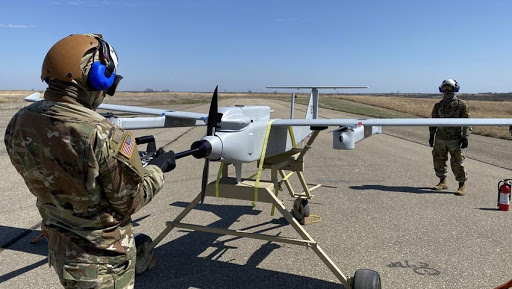The first of four candidates to replace the US Army’s RQ-7 Shadow unmanned aircraft system has successfully completed its first soldier operated flight on 7 April.
To continue reading the rest of this article, please log in.
Create free account to get unlimited news articles and more!
During a capabilities assessment The 1st Armored Brigade Combat Team, 1st Infantry Division flew the Arcturus UAV JUMP 20 at Fort Riley in Kansas.
The Army selected four unmanned aircraft systems in 2019 as candidates to replace the Shadow.
The service first selected two organisations to provide systems for a competitive soldier-led evaluation in March 2019: Martin UAV and Textron’s AAI Corporation. Martin UAV has teamed with Northrop Grumman to provide its V-Bat UAS; Textron is offering its Aerosonde HQ. Shortly after, the Army added two more aircraft to the mix: the Arcturus system and L-3 Harris’ FVR-90.
Of particular interest to the Army is improved acoustics and decreased runway dependence.
There are five Army units that will assess the UAVs.
The Arcturus UAV is the largest of the unmanned aircraft participating in the soldier assessments, weighing in at 210 pounds with an 18-foot wingspan.
“Despite the size, its reduced acoustic signature compared to the Shadow is appreciated by the entire crew,” An Army statement reported by DefenseNews read.
"We're used to screaming at each other and having to use radios in order to communicate," Specialist Christopher McCoy, a crew chief assigned to 1st Engineer Battalion, 1st ABCT, said in the statement. "You can stand right next to this aircraft and not even raise your voice.”
The JUMP 20 can also “launch and recover from a confined area with minimal ground support equipment,” according to Specialist Nicholas Miller, a UAS operator also assigned to 1st Engineer Battalion.
The soldiers in the unit will work with the UAS over the next five months.
“The assessment utilises a crawl, walk, run mentality, progressing through the operator and collective training, then culminating in brigade-level field training exercises and a Combat Training Center rotation,” the statement noted.
Units at Fort Campbell, Kentucky; Fort Lewis, Washington; Fort Bliss, Texas; and Fort Bragg, North Carolina, will evaluate the other UAS offerings from May through September, but the assessment schedules are “under regular re-evaluation as COVID-19 conditions change”, according to the statement.
The testing aims to find a suitable replacement for the Shadow system but also a suitable entry into the rest of the armies current helicopter and flight capabilities.
“We are very focused on 2021 and seeing the outcomes,” Brigadier General Wally Rugen, who is in charge of the Army’s future vertical lift modernization efforts, said in 2019, “but our goal is that in 2021 that this could fully inform our requirement. And if things go tremendously, which they don’t always do, we are postured to exploit that success in 2021.”

 Login
Login







